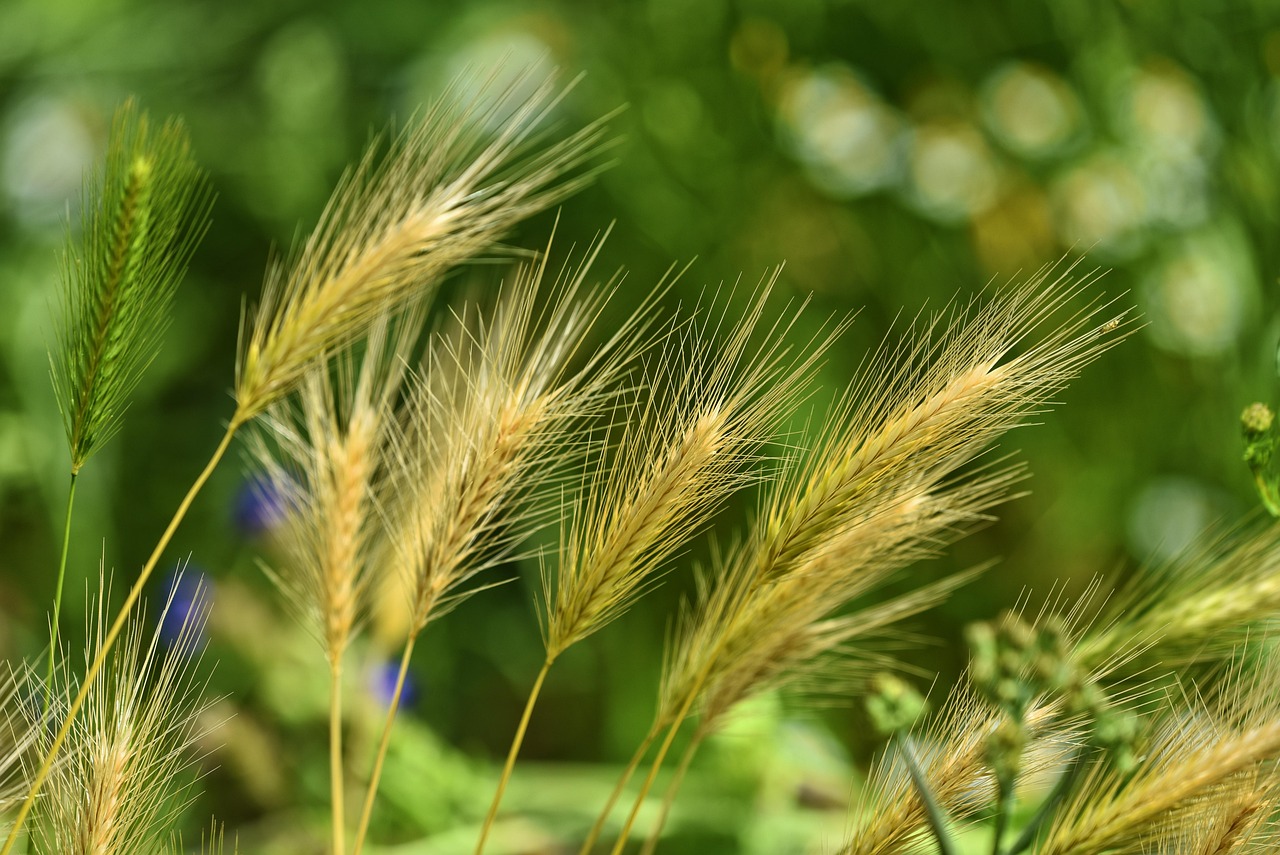Creeping lawn weeds can be a gardener’s worst nightmare. They invade lawns, gardens, and landscapes, often outcompeting desired plants for nutrients, water, and sunlight. Understanding these stubborn invaders is crucial to maintaining a healthy and beautiful outdoor space.
Weeds are more than just an aesthetic issue; they can significantly impact the health of your lawn. Creeping weeds, in particular, spread quickly and can establish deep root systems that make them difficult to control. They thrive in various conditions, making them a common challenge for homeowners and garden enthusiasts alike.

There are many types of creeping lawn weeds, each with its unique characteristics and growth habits. Some are perennial, returning year after year, while others may be annual, sprouting anew each season. Regardless of their type, all creeping weeds share a few common traits that contribute to their persistence.
| Type of Creeping Weed | Growth Habit | Common Areas Found |
|---|---|---|
| Clover | Perennial | Lawns, gardens |
| Crabgrass | Annual | Lawns, disturbed areas |
| Bindweed | Perennial | Gardens, fences |
| Dandelion | Perennial | Lawns, fields |
| Spurge | Annual | Lawns, driveways |
The rapid growth of these weeds can lead to significant competition for resources. For instance, a single dandelion can produce thousands of seeds, which can scatter far and wide, establishing new plants in various locations. Similarly, crabgrass is notorious for taking over lawns in the summer months when the soil is warm and moist.
Identifying Creeping Lawn Weeds
Identifying creeping lawn weeds early is essential for effective management. Many homeowners overlook these plants until they have already established themselves. Here are some common characteristics to help you identify these weeds:
- Leaf Shape: Creeping weeds often have distinctive leaf shapes. For example, clover features three heart-shaped leaflets.
- Growth Pattern: Many creeping weeds grow low to the ground and spread horizontally rather than vertically.
- Root System: Some creeping weeds develop extensive root systems that allow them to survive harsh conditions.
- Flowering: Many of these weeds produce flowers that can aid in identification. For instance, dandelions have bright yellow flowers that turn into fluffy seed heads.
Understanding these characteristics will help you differentiate between desirable plants and creeping weeds in your lawn. Regular inspections of your garden can aid in early detection and treatment, ultimately protecting your lawn from takeover.
Creeping lawn weeds not only threaten the appearance and health of your lawn but also indicate underlying issues with lawn care practices. Factors such as poor soil health, inadequate watering, and insufficient sunlight can create conditions favorable for weed growth. Addressing these issues is essential for maintaining a weed-free lawn.
By recognizing the signs of creeping lawn weeds and understanding their growth habits, you can take proactive measures to manage them. In the following sections, we will explore effective strategies for controlling these invasive plants before they dominate your garden space.
Effective Strategies for Managing Creeping Lawn Weeds
Managing creeping lawn weeds requires a combination of prevention, early detection, and effective control methods. This section will delve into various strategies that can help you maintain a healthy lawn while minimizing the impact of these invasive plants.
Prevention Techniques
Preventing the establishment of creeping lawn weeds is often more effective than trying to control them once they have taken hold. Here are some proactive measures you can take:
- Healthy Soil: Begin with healthy soil. Conduct a soil test to determine pH and nutrient levels. Amend the soil as needed to create an optimal growing environment for your grass.
- Proper Watering: Water your lawn deeply but infrequently. This encourages deep root growth in grass while discouraging shallow-rooted weeds.
- Fertilization: Regularly fertilize your lawn with the appropriate nutrients. A well-fed lawn is more competitive against weeds.
- Mowing Practices: Mow your grass at the recommended height for its species. Taller grass shades the soil and prevents weed seeds from germinating.
- Overseeding: Overseed your lawn in the fall or spring. This helps fill in bare spots, preventing weeds from taking root in those areas.
Identification of Target Weeds
Once you have established preventive measures, it is crucial to identify which creeping weeds have invaded your lawn. This knowledge will guide your control efforts effectively. Keep an eye out for the following common creeping weeds:
- Clover: Recognizable by its three leaflets and white or pink flowers.
- Crabgrass: Forms a dense mat and has wide, flat blades that grow horizontally.
- Bindweed: Twines around other plants and features white or pink trumpet-shaped flowers.
- Dandelion: Known for its bright yellow flowers and jagged leaves.
Control Methods

If creeping weeds have already established themselves in your lawn, various control methods can be employed. These methods can be categorized into cultural, mechanical, and chemical controls.
Cultural Controls
Cultural controls involve practices that enhance the health of your lawn while discouraging weeds:
- Mulching: Use mulch in garden beds to suppress weed growth and retain soil moisture.
- Companion Planting: Plant companion plants that repel weeds or enhance the growth of desired plants.
- Crop Rotation: In vegetable gardens, practice crop rotation to disrupt the life cycles of weeds.
Mechanical Controls
Mechanical controls include physical methods of removing weeds. Consider these options:
- Hand Pulling: For small infestations, hand-pulling can be effective. Ensure you remove the entire root system to prevent regrowth.
- Tilling: Tilling the soil can disrupt weed roots and prevent seed germination. However, be cautious as this can also bring dormant weed seeds to the surface.
- Weed Barriers: Install landscape fabric or plastic sheeting to block light and prevent weed growth in flower beds.
Chemical Controls
If other methods are insufficient, chemical herbicides may be necessary. It is important to choose products that target specific types of weeds while being safe for your grass:

- Selective Herbicides: These herbicides kill only certain types of plants, allowing your grass to thrive.
- Pre-emergent Herbicides: Apply these before weed seeds germinate to prevent their growth.
- Post-emergent Herbicides: These are used on existing weeds but should be applied carefully to avoid harming desirable plants.
By employing a combination of prevention, identification, and control methods, you can effectively manage creeping lawn weeds and maintain a lush green lawn. The next section will discuss specific techniques for applying these strategies throughout different seasons.
Seasonal Strategies for Weed Management

Managing creeping lawn weeds effectively requires a seasonal approach. Each season presents unique opportunities and challenges for controlling weeds. By adapting your lawn care strategies to align with the seasonal changes, you can enhance the health of your lawn and reduce weed populations.
Spring: Early Intervention
Spring is a critical time for weed management. As temperatures rise, many creeping weeds begin to germinate. Here are some strategies to implement during this season:
- Soil Preparation: Start with soil testing and amendments. This ensures your grass has the nutrients it needs to compete against weeds.
- Pre-emergent Herbicides: Apply pre-emergent herbicides early in the spring before weed seeds germinate. This can significantly reduce the emergence of annual weeds like crabgrass.
- Mowing: Begin mowing as soon as the grass starts to grow. Keeping your lawn at the recommended height will help shade the soil, preventing weed seed germination.
Summer: Maintenance and Control
Summer is when creeping weeds are often most visible. It’s essential to stay vigilant during this season:
- Regular Watering: Water your lawn deeply, especially during dry spells. A well-hydrated lawn is more resilient to weed invasion.
- Spot Treatment: As weeds become more apparent, use selective post-emergent herbicides on identified patches of creeping weeds while avoiding desirable plants.
- Hand Weeding: For small infestations, hand-pulling weeds can be effective. Ensure you remove the entire root to prevent regrowth.
Fall: Recovery and Reinforcement
Fall is an excellent time to focus on recovery and preparation for the following year:
- Overseeding: Fall is ideal for overseeding your lawn. This helps fill in bare spots and strengthen your grass against future weed invasions.
- Fertilization: Apply a balanced fertilizer designed for fall application. This will support root growth and prepare your grass for winter.
- Weed Removal: Continue to remove any remaining weeds before they set seed to reduce their numbers for next spring.
Winter: Preparation for Spring
While winter may seem like a dormant period for lawn care, it is actually a good time to prepare for the upcoming growing season:
- Planning: Assess your lawn from the previous year. Identify which weeds were problematic and adjust your strategies accordingly.
- Equipment Maintenance: Prepare your lawn care equipment, such as lawn mowers and aerators, for the upcoming spring season.
- Soil Testing: Consider testing your soil again to determine if any nutrient deficiencies need to be addressed before spring.
By implementing these seasonal strategies, you can create a comprehensive plan for managing creeping lawn weeds. Each season offers unique opportunities to strengthen your lawn and minimize weed pressure. In the next section, we will explore organic solutions and natural methods for controlling creeping weeds effectively.
Organic Solutions and Natural Methods for Controlling Creeping Weeds
For those looking to manage creeping lawn weeds without the use of synthetic chemicals, various organic solutions and natural methods can be highly effective. These alternatives not only protect the environment but also promote a healthier lawn ecosystem.
Natural Herbicides
Natural herbicides can be an excellent choice for controlling weeds. Many are derived from plant extracts or essential oils and can target specific types of weeds without harming your grass:
- Vinegar: Household vinegar contains acetic acid, which can effectively kill young weeds. However, it should be applied carefully to avoid damaging desirable plants.
- Boiling Water: Pouring boiling water directly onto weeds can scorch them, making it a quick and effective method for small patches.
- Corn Gluten Meal: This natural pre-emergent herbicide helps prevent weed seeds from germinating. It is best applied before weeds start to sprout.
Mulching Techniques
Mulching is a powerful method for preventing weed growth while improving soil health:
- Organic Mulches: Materials such as straw, wood chips, or shredded leaves can suppress weed growth and retain soil moisture.
- Landscape Fabric: This barrier can be placed under mulch to further inhibit weed growth while allowing air and water to reach the soil.
Cultural Practices
Cultural practices play a significant role in creating an environment that discourages weed growth:
- Encouraging Healthy Grass Growth: A dense, healthy lawn is the best defense against creeping weeds. Use proper fertilization and watering techniques to promote vigorous grass growth.
- Crop Rotation in Gardens: Rotating different types of plants in garden beds can disrupt the life cycles of persistent weeds.
- Companion Planting: Certain plants can help repel or outcompete weeds, providing natural control mechanisms in your garden.
Final Thoughts
Creeping lawn weeds can pose a significant challenge to homeowners and garden enthusiasts. However, with the right strategies, identifying these intruders early, and implementing seasonal management techniques, you can maintain a lush, healthy lawn. Utilizing both conventional and organic methods allows for flexibility in your approach, catering to different needs and preferences.
The key to successful weed management lies in understanding the life cycles of these plants and applying targeted control measures. From prevention techniques implemented during spring to active management strategies in summer and fall, every season offers unique opportunities to minimize weed populations.
Remember that a healthy lawn not only enhances the beauty of your property but also contributes to the overall health of the local ecosystem. By focusing on maintaining soil health, encouraging robust grass growth, and integrating natural weed control methods, you can create an outdoor space that thrives while keeping creeping lawn weeds at bay.
Your commitment to proactive lawn care will pay off in the long run. With patience and consistent effort, you can enjoy a weed-free lawn that is both inviting and sustainable for years to come.
